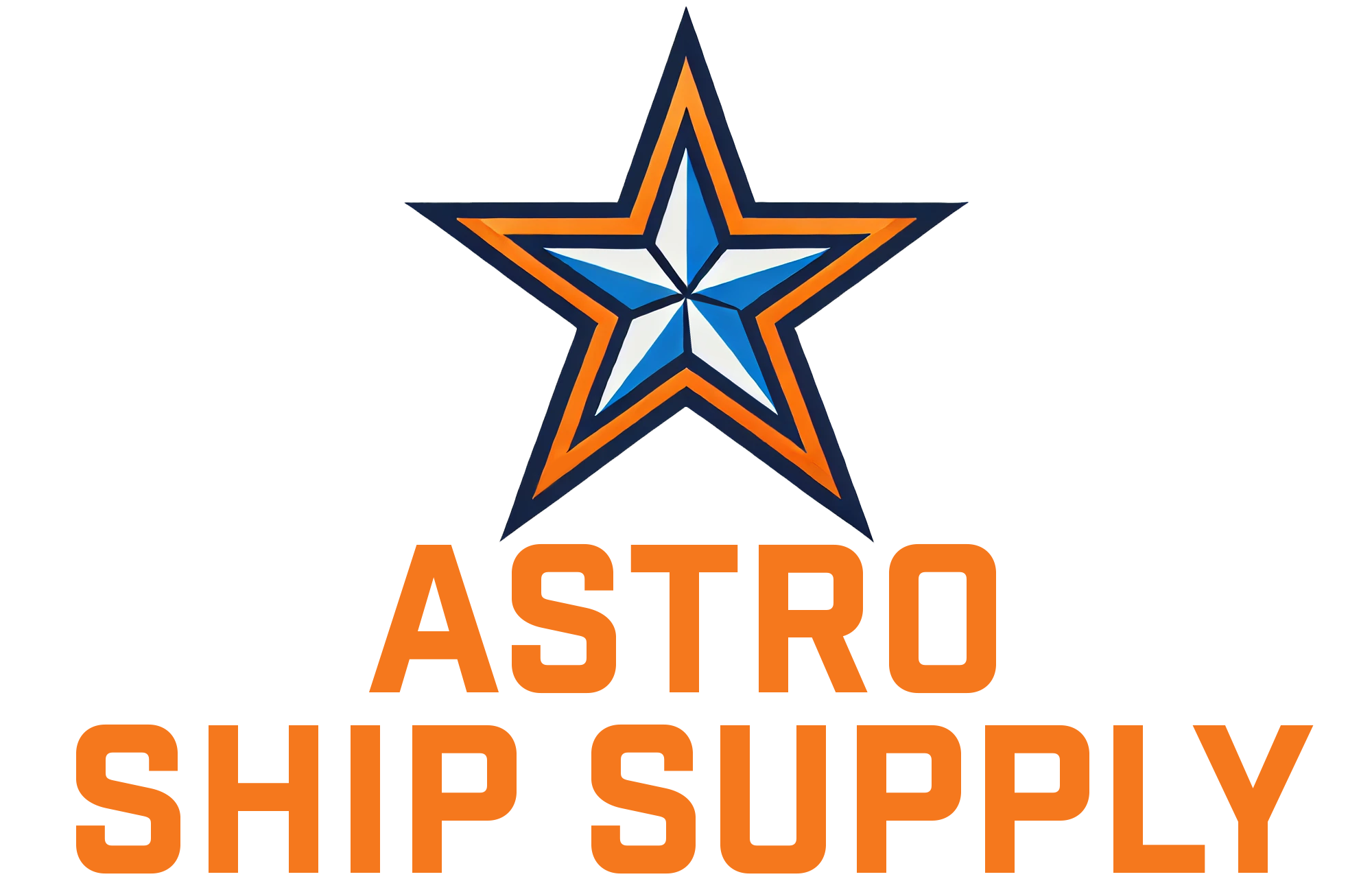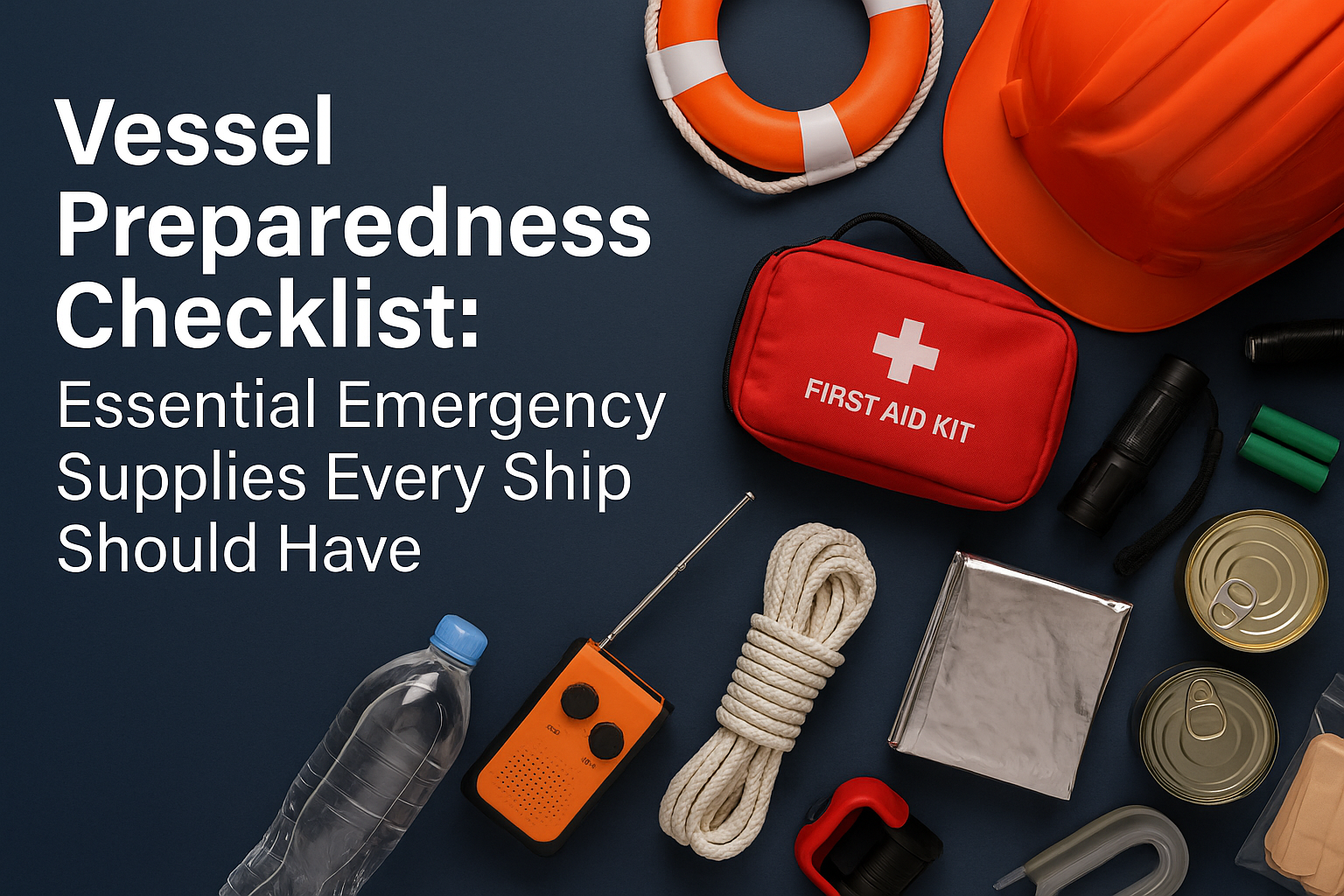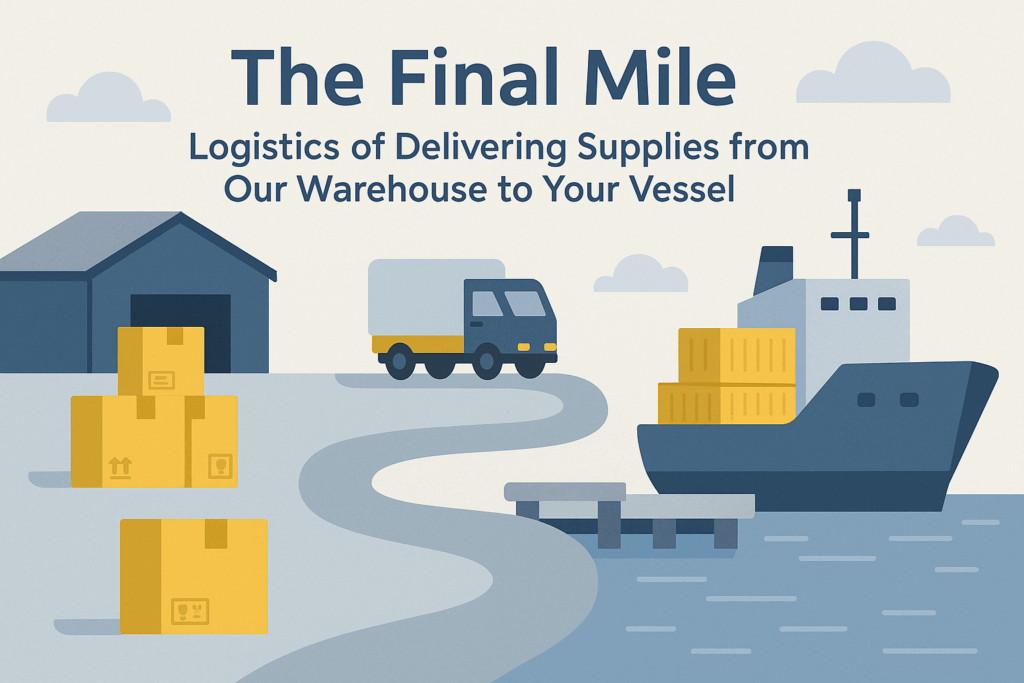The maritime industry is a dynamic environment, constantly presenting new challenges, from unexpected weather patterns to unforeseen mechanical failures. A well-stocked vessel isn’t just about compliance; it’s about safeguarding lives, protecting assets, and minimizing downtime. This detailed guide will delve into the essential emergency supplies every ship should have, offering practical insights, comparative analyses, and real-world scenarios to elevate your preparedness strategy.
—
The Pillars of Maritime Readiness: Why a Checklist Matters
Think of your vessel preparedness checklist as your ship’s comprehensive emergency action plan. It’s a living document that evolves with your vessel’s needs, voyages, and regulatory changes. But why is it so crucial? Beyond the obvious safety implications, a thorough checklist offers several strategic advantages:
- Enhanced Safety: The primary objective. Proper supplies ensure your crew can respond effectively to medical emergencies, fires, abandon ship scenarios, and more.
- Regulatory Compliance: Adherence to international and national maritime regulations (like SOLAS, IMO, and U.S. Coast Guard requirements) is non-negotiable. A checklist helps ensure all mandatory items are on board and in good working order.
- Operational Efficiency: Unexpected incidents can lead to costly delays. Having the right tools and supplies on hand can mitigate the impact of emergencies, allowing for quicker resolution and minimizing operational disruptions.
- Crew Morale and Confidence: A well-prepared crew feels more secure and confident in their ability to handle crises, contributing to a positive and productive working environment.
- Cost Savings: While it seems counterintuitive, proactive preparedness can lead to significant long-term cost savings by preventing major incidents, reducing insurance premiums, and avoiding fines for non-compliance.
At Astro Ship Supply, we emphasize a holistic approach to ship supply, ensuring that every item, from provisions to specialized deck supplies, contributes to your overall readiness.
—
Essential Categories of Emergency Supplies: A Deep Dive
A comprehensive vessel preparedness checklist goes beyond the basics. It categorizes supplies to ensure no critical area is overlooked. Here’s a breakdown of the key categories:
1. Life-Saving Appliances (LSA) & Fire Fighting Equipment (FFE)
These are the absolute non-negotiables, governed by strict international regulations. Regular inspection and maintenance are as crucial as initial procurement.
LSA Checklist Items:
- Life Rafts & Lifeboats: Sufficient capacity for all persons on board, regularly serviced and inspected.
- Lifejackets & Immersion Suits: One for every person on board, plus spares, in good condition and readily accessible.
- EPIRBs (Emergency Position Indicating Radio Beacons) & SARTs (Search and Rescue Transponders): Fully functional, registered, and easily deployable.
- Pyrotechnics (Flares, Smoke Signals): In-date and stored appropriately.
- First Aid Kits & Medical Supplies: Compliant with international medical guide for ships (IMGS), including specialized medications as needed.
- Thermal Protective Aids (TPAs): For hypothermia protection in survival craft.
- Rescue Boats & Davits: Maintained and tested regularly.
FFE Checklist Items:
- Fire Extinguishers: Various types (ABC, CO2, Foam) strategically placed, regularly inspected and tagged.
- Fire Hoses & Nozzles: In good condition, with adequate pressure.
- Fire Blankets: Located in galleys and other high-risk areas.
- Fireman’s Outfits: Including breathing apparatus (SCBA), protective clothing, boots, and helmets.
- Emergency Fire Pumps: Tested frequently.
- Fixed Fire Extinguishing Systems (CO2, HFC-227ea, etc.): Regularly serviced and certified.
Case Study: The Importance of Up-to-Date LSA Servicing
During a routine inspection, a cargo vessel was found to have expired pyrotechnics and overdue life raft servicing. While seemingly minor, these non-compliances could have had catastrophic consequences in a real emergency. The vessel faced significant fines and delays until all deficiencies were rectified, highlighting the importance of meticulous record-keeping and proactive maintenance schedules.
2. Medical & First Aid Supplies
Beyond the basic first aid kit, vessels need a comprehensive medical inventory, particularly for longer voyages or those operating in remote areas. This category directly impacts crew well-being and vessel continuity.
Key Medical Supplies:
- Advanced First Aid Kits: Including splints, bandages, antiseptic solutions, and wound closure strips.
- Medications: A range of over-the-counter and prescription medications (pain relievers, anti-inflammatories, antibiotics, seasickness medication, etc.), stored securely and with clear expiration dates.
- Diagnostic Tools: Thermometers, blood pressure cuffs, stethoscopes, glucose meters.
- Surgical Instruments (Basic): For minor procedures if a medical officer is on board.
- Personal Protective Equipment (PPE): Gloves, masks, eye protection for administering aid.
- Defibrillator (AED): Increasingly common and highly recommended.
- Stretchers & Immobilization Devices: For safe transport of injured personnel.
Comparative Analysis: IMGS vs. Local Regulations
While the **International Medical Guide for Ships (IMGS)** provides a global standard, specific flag state regulations and port authorities may have additional requirements. For instance, some countries may mandate specific vaccines for crew members or require certain controlled substances to be present with strict inventory controls. Always cross-reference IMGS guidelines with the regulations of your vessel’s flag state and intended ports of call.
At Astro Ship Supply, we ensure our medical supplies are sourced from reputable suppliers and comply with all relevant health and safety standards, working closely with the Texas Department of State Health Services for compliance.
3. Communications & Navigation Equipment (Emergency Redundancy)
While often part of a vessel’s standard operational equipment, emergency communication and navigation tools require specific attention for redundancy and reliability during crises.
Emergency Comms & Nav Checklist:
- VHF Radios (Fixed & Handheld): Fully charged, operational, and with spare batteries.
- Satellite Phones: With active subscriptions and sufficient talk time.
- Portable GPS Units: With spare batteries.
- Emergency Lighting & Signalling Equipment: Battery-powered lights, signal lamps, and spare bulbs.
- Nautical Charts & Publications (Paper Backup): Even in the digital age, paper charts provide essential redundancy.
- Binoculars: For visual observation.
Example Scenario: Loss of Main Power
Imagine a scenario where your vessel experiences a complete loss of main power, disabling your primary navigation and communication systems. Having charged handheld VHF radios, a satellite phone, and paper charts can be the difference between a minor inconvenience and a full-blown emergency, allowing you to communicate your position and intent for assistance.
4. General Emergency & Repair Supplies
These are the practical items that allow a crew to address minor issues before they escalate or to manage the immediate aftermath of an incident.
General Supplies Checklist:
- Tools (Basic & Specialized): Wrenches, hammers, screwdrivers, cutting tools, and any specialized tools for emergency repairs specific to your vessel.
- Leak Stopping & Damage Control Kits: Wooden plugs, wedges, patching materials, and emergency sealants.
- Flashlights & Headlamps: With ample spare batteries.
- Work Lights: Portable and battery-powered.
- Ropes & Lines (Emergency): Various lengths and strengths for towing, securing, or rescue operations.
- Emergency Drinking Water & Rations: For extended periods in survival craft.
- Heavy-Duty Tarpaulins & Sheeting: For temporary repairs or weather protection.
- Cleaning Supplies: For maintaining hygiene after an incident.
Comparative Approach: Preparedness for Different Vessel Types
While core emergency supplies remain consistent, the specific quantities and types will vary based on vessel size, type (e.g., cargo, passenger, offshore support), and typical voyage duration. A bulk carrier might prioritize heavy-duty repair kits, whereas a passenger ferry would focus more on robust evacuation protocols and comprehensive medical supplies. We tailor our ship chandlery and supply services to your unique vessel specifications.
—
Beyond the Checklist: Proactive Strategies for Optimal Preparedness
Having the supplies is only half the battle. Effective preparedness requires a commitment to ongoing maintenance, training, and strategic procurement.
Regular Inspections & Maintenance
All emergency equipment must be regularly inspected, tested, and maintained according to manufacturer guidelines and regulatory requirements. Keep meticulous records of all inspections and servicing. This proactive approach prevents equipment failure during critical moments.
Crew Training & Drills
A well-stocked vessel with an untrained crew is a significant liability. Regular emergency drills (fire, abandon ship, man overboard) are essential to ensure every crew member knows their role, understands how to use emergency equipment, and can act cohesively under pressure. Debriefing after drills provides valuable learning opportunities.
Strategic Procurement & Inventory Management
This is where a reliable ship chandler like Astro Ship Supply becomes your invaluable partner. Efficient procurement involves:
- Quality Sourcing: Ensuring all supplies meet international standards and are fit for purpose.
- Timely Delivery: Preventing stockouts and ensuring supplies are on board when needed.
- Inventory Tracking: Implementing systems to monitor expiration dates, usage, and reorder points.
- Customized Solutions: Working with a supplier who understands your vessel’s unique requirements and can provide tailored supply packages.
Our commitment to **ISO 9001:2015 Quality Management System** and **HACCP Food Safety Management** ensures that all our supplies, from provisions to emergency equipment, meet the highest standards of quality and reliability. We also adhere to the **International Ship and Port Facility Security (ISPS) Code** and **U.S. Customs and Border Protection requirements** for bulk compliance.
—
Leveraging Technology for Enhanced Preparedness
Modern technology offers powerful tools to enhance your vessel preparedness:
- Digital Inventory Systems: Software for tracking supplies, managing expiration dates, and automating reorder processes.
- Maintenance Management Software: For scheduling equipment inspections and logging maintenance activities.
- Simulation-Based Training: Advanced simulators for realistic emergency response drills.
- Real-time Weather & Route Optimization: To help avoid hazardous conditions and plan safer voyages.
While technology is an aid, it should always complement, not replace, traditional preparedness methods and skilled human intervention. The human element remains critical in every emergency scenario.
—
Conclusion: Your Voyage, Our Priority
Comprehensive vessel preparedness is an ongoing journey, not a destination. It demands continuous vigilance, investment in quality supplies, and a commitment to crew training. By meticulously maintaining your emergency supplies and adhering to proactive safety protocols, you not only comply with regulations but also safeguard lives, protect your assets, and ensure the uninterrupted flow of your maritime operations.
At Astro Ship Supply, we are more than just a provider; we are your trusted partner in maritime readiness. With our deep understanding of the industry, our commitment to quality, and our 24/7 support, we ensure your vessel is always prepared for the challenges of the open sea. From the Port of Houston to the wider Gulf Coast region, we deliver excellence in every supply, ensuring your crew’s comfort, your vessel’s efficiency, and your journey’s success.
Don’t leave your vessel’s safety to chance. Request a quote today and let us help you build an impenetrable foundation of preparedness.
—
Frequently Asked Questions (FAQ)
What are the absolute minimum emergency supplies required on a commercial vessel?
The absolute minimum emergency supplies are dictated by international conventions like SOLAS (Safety of Life at Sea) and national regulations by flag states (e.g., U.S. Coast Guard). These typically include sufficient life-saving appliances (life rafts, lifejackets, EPIRBs, SARTs), fire-fighting equipment (extinguishers, hoses, fireman’s outfits), basic first aid kits, and emergency communication devices. The exact list varies by vessel type, size, and operating area. Consulting the relevant regulatory bodies and a trusted ship chandler like Astro Ship Supply is crucial for comprehensive compliance.
How often should a vessel’s emergency supplies be inspected and serviced?
The frequency of inspection and servicing for emergency supplies varies by item. Life rafts and EPIRBs typically require annual servicing by certified service stations. Fire extinguishers and SCBAs usually have annual inspections and hydrostatic testing every few years. Pyrotechnics have specific expiration dates and must be replaced before expiry. First aid kits should be checked regularly for expired medications and replenished as needed. Maintaining a detailed log and schedule for all emergency equipment is essential for compliance and safety. Regular drills also help identify any deficiencies.
Can a ship chandler help with regulatory compliance for emergency supplies?
Absolutely. Reputable ship chandlers, like Astro Ship Supply, are invaluable partners in ensuring regulatory compliance for emergency supplies. We stay up-to-date with the latest international and national maritime regulations (SOLAS, IMO, USCG, ISPS, etc.). We can provide compliant equipment, assist with inventory management to track expiration dates, and advise on specific requirements based on your vessel’s flag state and operating routes. Our expertise helps streamline the procurement process, ensuring you have the right certified equipment on board, saving you time, and preventing potential fines or delays.
What’s the difference between routine vessel supplies and emergency supplies?
Routine vessel supplies (also known as ship provisions or deck supplies) are the everyday items essential for a vessel’s normal operations and crew comfort. This includes food, beverages, cleaning products, spare parts for routine maintenance, navigational charts, stationery, and general deck equipment. Emergency supplies, on the other hand, are specifically designated for use during unforeseen critical incidents such as fires, medical emergencies, abandon ship scenarios, or major equipment failures. These include life-saving appliances (life rafts, lifejackets), fire-fighting equipment, advanced medical kits, and redundant communication systems. While both are vital for a vessel, emergency supplies are critical for safety and survival in crisis situations.
How does a bonded store contribute to vessel preparedness, especially for emergencies?
A bonded store primarily offers duty-free goods like tobacco, alcohol, and luxury items for crew consumption. While not directly emergency supplies, a well-managed bonded store can indirectly contribute to overall preparedness by boosting crew morale and comfort. A content crew is often a more alert and effective crew, better able to respond to emergencies. Furthermore, efficient bonded store operations demonstrate good inventory management practices, which can be extended to emergency supplies. In some emergency scenarios, certain items from the bonded store might, in an extreme situation, be repurposed, but this is not their primary role. The strategic advantage of a bonded store is more about creating a positive environment that supports overall operational readiness and crew well-being.






